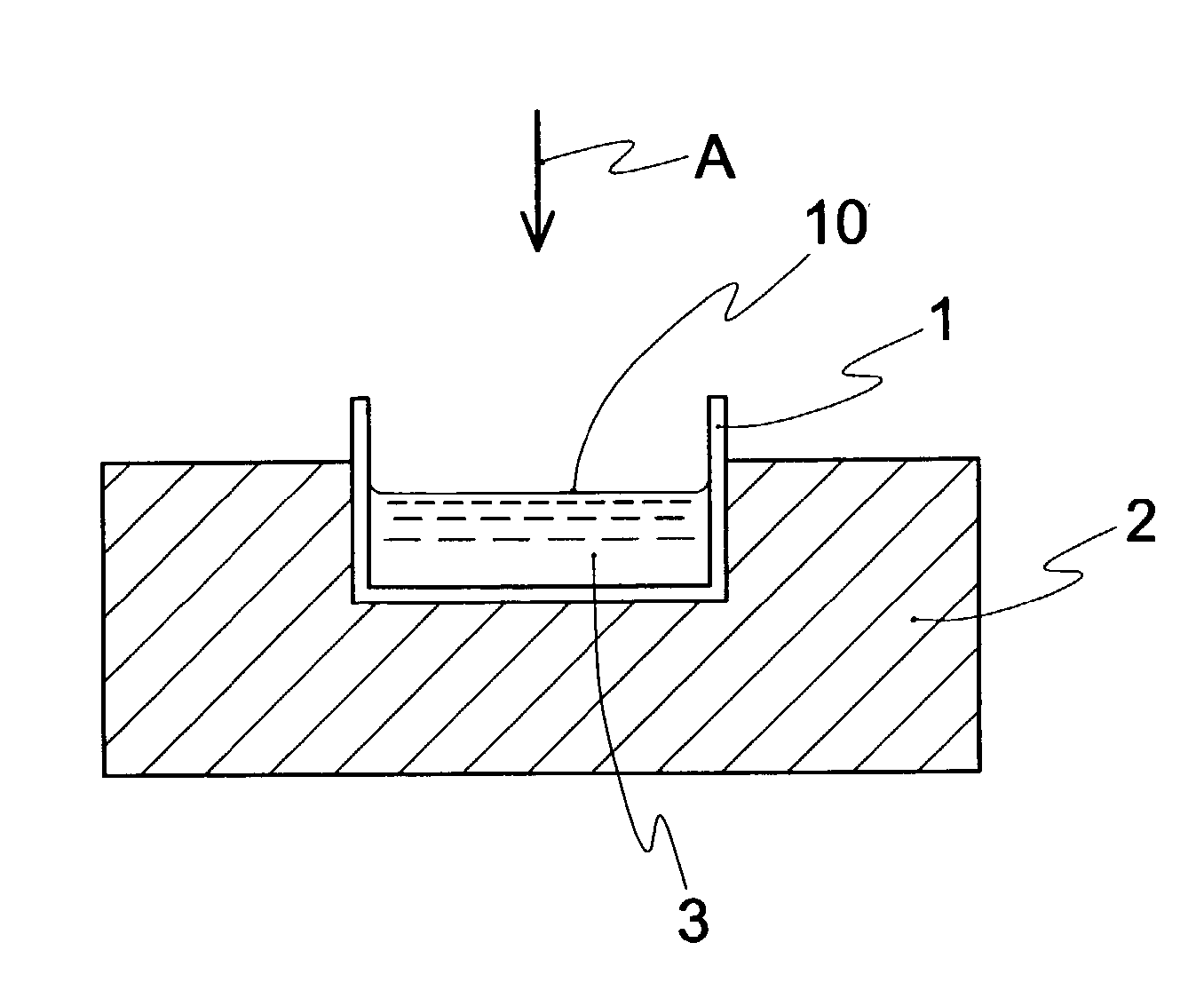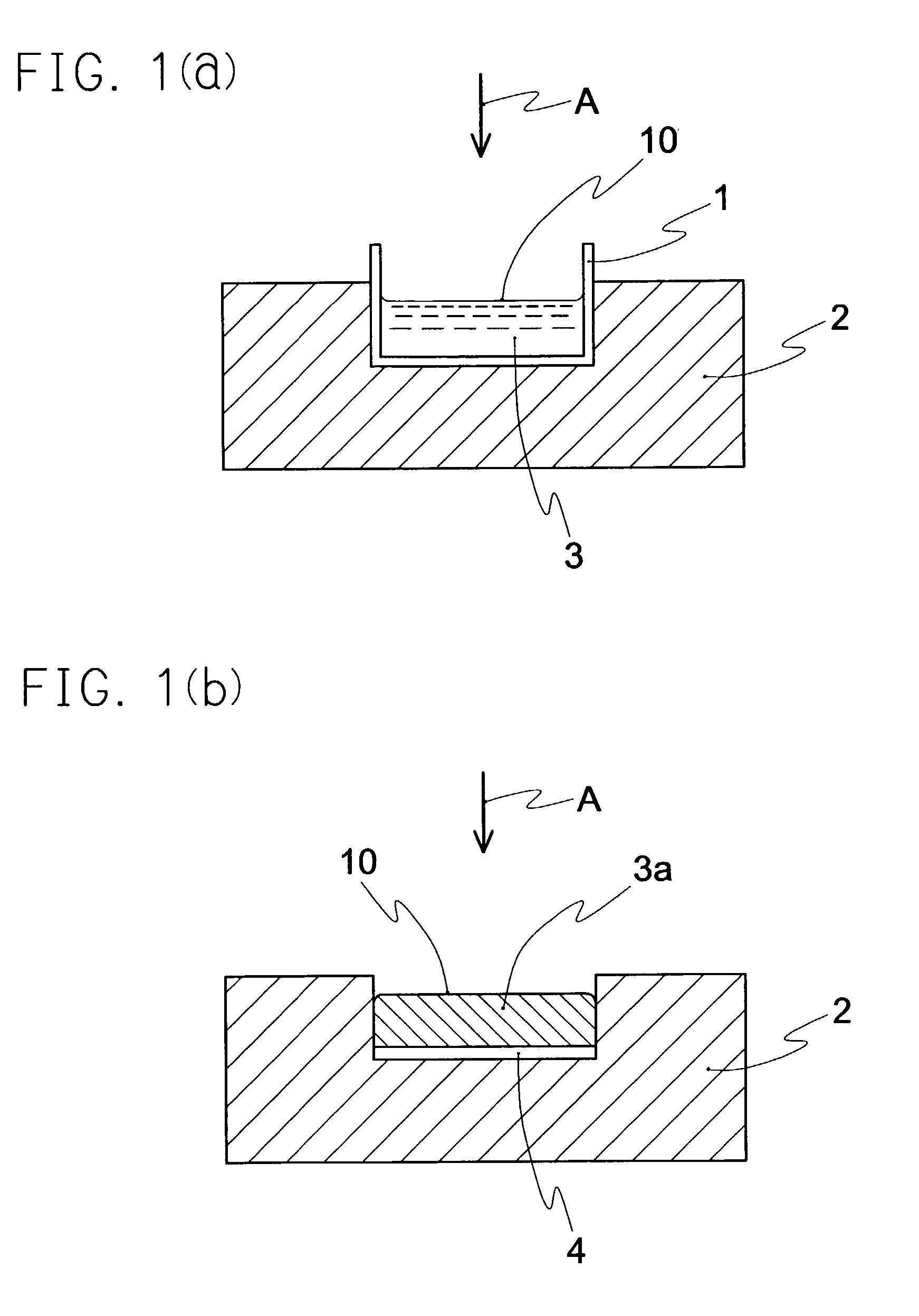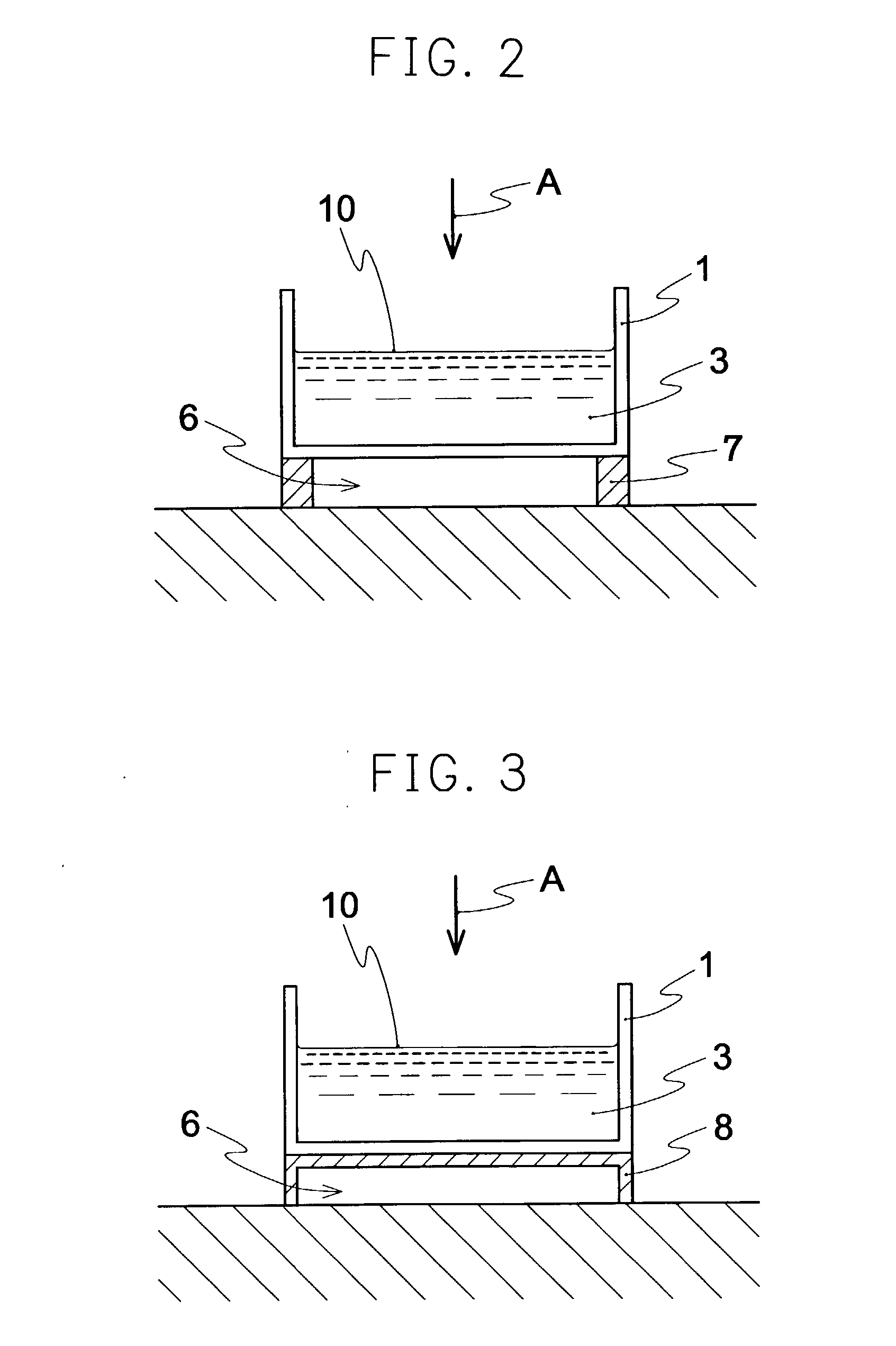Spongy moldings comprising water-soluble polymeric material and method of controlling pores thereof
a polymer material and spongy technology, applied in the field of controlling pores of spongy moldings comprising water-soluble polymeric materials, can solve the problems of inability to expect the infiltration of blood vessels and fibroblasts over the wide range of sponges, the inability to guarantee the constant ability of wound healing, and the humoral factor produced from the fibroblasts and the keratinocytes inside the cultured skin on applying to a defect cannot easily reach the tissue or cells
- Summary
- Abstract
- Description
- Claims
- Application Information
AI Technical Summary
Benefits of technology
Problems solved by technology
Method used
Image
Examples
example 2
[0104] Preparation of Atelocollagen Sponge
[0105] About 20 g of 1.0% atelocollagen / citric acid aqueous solution (derived from the skin of adult pig) was poured into the plastic case (container 1) having a size of about 100.times.100.times.20 mm, and was gelated in an atmosphere of ammonia gas. As shown in FIG. 2, freezing the gel was carried out by putting that plastic case on a plastic component (component 7), putting it into the ultra-deep freezer and then lyophilization was carried out. The obtained sponge was crosslinked by irradiating ultraviolet ray. This sponge was washed with water. Again, the freeze and the lyophilization were performed to obtain an atelocollagen sponge (a spongy molding of the present invention).
[0106] Observation by Scanning Electron Microscopy
[0107] The surface and the cross section of the obtained atelocollagen sponge were observed with the scanning electron microscope. FIG. 9 is the scanning electron micrograph (original magnification .times.35) of the ...
example 3
[0109] Preparation of Atelocollagen Sponge
[0110] About 20 g of 1.0% atelocollagen / citric acid aqueous solution (derived from the skin of adult pig) was poured into the plastic case (container 1) having the size of about 100.times.100.times.20 mm, and was gelated in an atmosphere of ammonia gas. As shown in FIG. 3, freezing the gel was performed by carrying that plastic case on an empty plastic case (case 8) laid prone, putting it into the ultra-deep freezer and then lyophilization was carried out. The obtained sponge was crosslinked by irradiating ultraviolet ray. This sponge was washed with water. Again, the freeze and the lyophilization were performed to obtain an atelocollagen sponge (a spongy molding of the present invention).
[0111] Observation by Scanning Electron Microscopy
[0112] The surface and the cross section of the obtained atelocollagen sponge were observed with the scanning electron microscope). FIG. 11 is the scanning electron micrograph (original magnification .times....
example 4
[0114] Preparation of Chitosan Solution
[0115] About 1 g of chitosan (derived from crab shell) was added to about 99 g of ultra pure water and was gently stirred at room temperature. With stirring, thereto 1 ml of acetic acid was added and the stirring was continued for about 4 hours at room temperature to obtain a chitosan solution.
[0116] Preparation of Chitosan / Atelocollagen Sponge
[0117] The above-mentioned chitosan solution in amount of 25 g was combined with 75 g of 1.0% atelocollagen / citric acid aqueous solution as the same in Example 1. About 20 g of the mixture was poured into a plastic case having a size of about 100.times.100.times.20 mm, and was gelated in an atmosphere of ammonia gas. Freezing the gel was carried out by inserting the plastic case in the heat insulation frame made from polystyrene foam as the same in Example 1, putting whole heat insulation frame into the ultra-deep freezer, and then lyophilization was carried out. The obtained sponge was crosslinked by irr...
PUM
| Property | Measurement | Unit |
|---|---|---|
| porosities | aaaaa | aaaaa |
| diameter | aaaaa | aaaaa |
| temperature | aaaaa | aaaaa |
Abstract
Description
Claims
Application Information
 Login to View More
Login to View More - R&D
- Intellectual Property
- Life Sciences
- Materials
- Tech Scout
- Unparalleled Data Quality
- Higher Quality Content
- 60% Fewer Hallucinations
Browse by: Latest US Patents, China's latest patents, Technical Efficacy Thesaurus, Application Domain, Technology Topic, Popular Technical Reports.
© 2025 PatSnap. All rights reserved.Legal|Privacy policy|Modern Slavery Act Transparency Statement|Sitemap|About US| Contact US: help@patsnap.com



